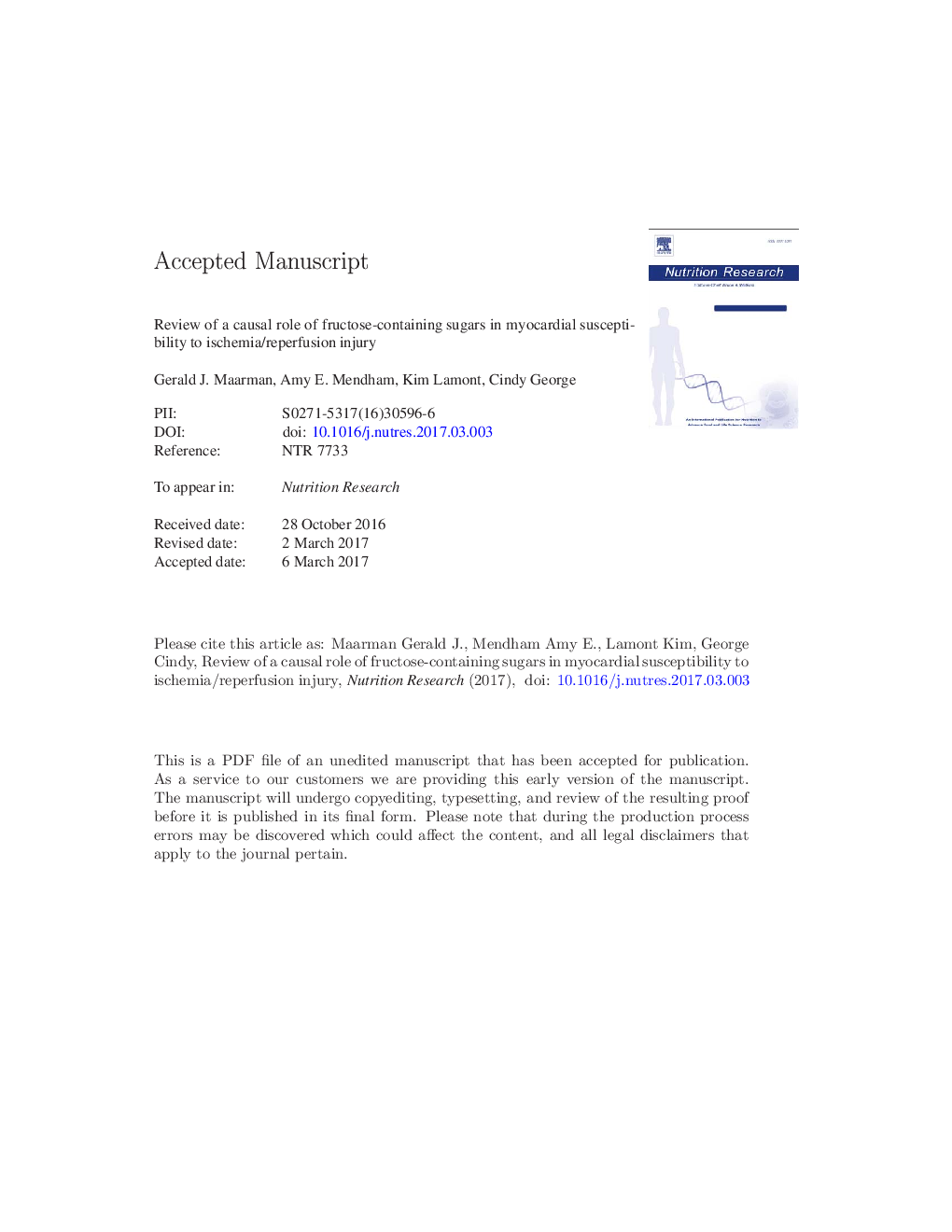| Article ID | Journal | Published Year | Pages | File Type |
|---|---|---|---|---|
| 5588672 | Nutrition Research | 2017 | 32 Pages |
Abstract
In 2012, the World Health Organization Global Status Report on noncommunicable diseases showed that 7.4 million deaths were due to ischemic heart disease. Consequently, cardiovascular disease is a significant health burden, especially when partnered with comorbidities such as obesity, metabolic syndrome, and type 2 diabetes mellitus. Of note, these diseases can all be induced or exacerbated by diet. Carbohydrates, in particular, fructose and glucose, generally form the largest part of the human diet. Accumulating evidence from animal studies suggests that if large amounts of fructose are consumed either in isolation or in combination with glucose (fructose-containing sugars), myocardial susceptibility to ischemia/reperfusion (I/R) injury increases. However, the underlying mechanisms that predisposes the myocardium to I/R injury in the fructose model are not elucidated, and no single mechanistic pathway has been described. Based on all available data on this topic, this review describes previously investigated mechanisms and highlights 3 main mechanistic pathways whereby fructose has shown to increase myocardial susceptibility to I/R injury. These pathways include (1) increased reactive oxygen species, resulting in reduced nitric oxide synthase and coronary flow; (2) elevated plasma fatty acids and insulin, leading to increased cardiac triglyceride content and lipotoxicity; and (3) disrupted myocardial calcium handling/homeostasis. Moreover, we highlight various factors that should be taken into account when the fructose animal model is used, such as rat strain, treatment periods, and doses. We argue that failure to do so would result in erratic inferences drawn from the existing body of evidence on fructose animal models.
Keywords
Related Topics
Life Sciences
Biochemistry, Genetics and Molecular Biology
Endocrinology
Authors
Gerald J. Maarman, Amy E. Mendham, Kim Lamont, Cindy George,
